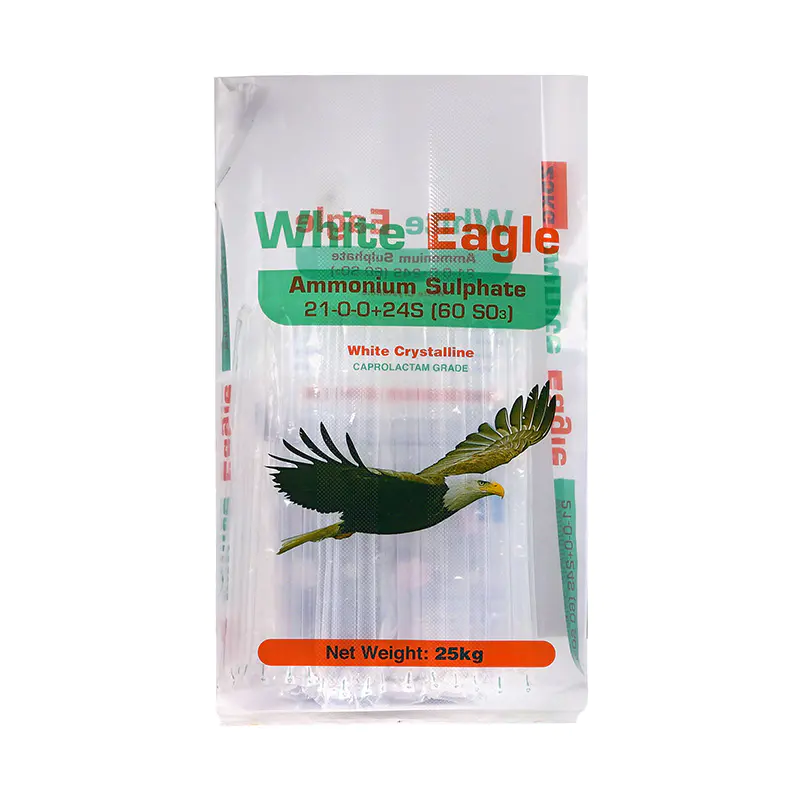Email us now!
PP ton bags are indispensable in industrial supply chains, but their true utility goes beyond just holding and moving goods. What makes these bags reliable in demanding environments is their built-in safety mechanisms and adherence to consistent construction norms. This article breaks down the technical aspects that ensure the safe and effective use of PP ton bags across various industrial scenarios, helping readers gain a deeper understanding of how to select and utilize them appropriately.

The Critical Role of the Safety Factor
At the core of PP ton bag design lies the safety factor, a key concept that directly impacts operational safety. This ratio compares the bag’s less breaking strength to its safe working load. For instance, a bag rated for a certain working load with a specific safety factor is engineered to handle far greater forces before reaching its breaking point. This buffer is essential because real-world use introduces unpredictable variables—dynamic forces during lifting when a forklift or crane moves the bag, uneven distribution of the contents inside, and occasional impacts during transportation or storage. Without this safety margin, even minor deviations from ideal handling could advance to bag failure, creating risks for both workers and the materials being transported.
The safety factor isn’t just an arbitrary number; it’s a result of careful engineering that accounts for the typical stresses a bag might encounter in its intended application. Different industries and use cases may call for different safety factor ratios, depending on the weight and nature of the materials being carried. For example, bags used for heavy or dense items may require a more robust safety factor compared to those holding lighter, bulkier goods. Understanding this ratio helps buyers ensure that the bags they choose can withstand the specific challenges of their operational environment.
An Overview of Common Ton Bag Varieties
PP ton bags are not one-size-fits-all—they are adapted into various types to meet specific handling needs and content characteristics. Each variety is designed with unique features that enhance functionality for particular applications.
Baffle Bags: These bags include internal partitions (baffles) that help maintain a stable, cubic shape once filled. This stability is particularly valuable for stacking and palletization, as it prevents the bags from bulging or tipping over.整齐的 stacking not only saves space in warehouses and during transportation but also reduces the risk of damage to the bags or their contents.
Open Top Bags with Sleeves: Designed for ease of filling, these bags feature an open top often equipped with a sleeve that can be cinched closed after filling. They typically come with sturdy lifting loops that are positioned to accommodate forklift tines, making the lifting and moving process efficient. This type is widely used in scenarios where quick and convenient loading of materials is a priority.
Discharge Spout Bags: Equipped with a spout at the bottom, these bags allow for controlled and precise pouring of contents. This feature is especially useful for granular or powdered materials, as it prevents spillage and enables accurate dispensing into containers or processing equipment. The spout can often be sealed when not in use, maintaining the integrity of the contents during storage.
Coated and Lined Bags: For applications involving fine powders that might leak or materials sensitive to moisture, coated or lined bags are the go-to choice. A polyurethane coating or an internal liner creates a barrier, keeping the contents secure and protected from external elements. This type is common in industries like chemicals, food processing, and pharmaceuticals, where product purity and containment are critical.
Conductive Bags: In environments where combustible dust or vapors are present, static electricity poses a hazard. Conductive PP ton bags are made with materials that dissipate static charge, reducing the risk of sparks that could ignite flammable substances. These bags are essential in industries such as plastics manufacturing, mining, and petroleum processing.
Understanding Industry Standards and Testing
While manufacturer specifications provide basic information, independent industry standards offer a trusted framework for evaluating the quality and safety of PP ton bags. Regional and international organizations have developed detailed test methods and performance criteria that these bags must meet to ensure consistency and reliability.
Compliance with these standards involves rigorous testing that simulates the real-world stresses bags endure. Tests may include evaluating the bag’s strength during lifting, checking for resistance to tearing and puncturing, assessing the durability of seams and loops, and verifying performance under different temperature and humidity conditions. These tests provide an objective validation of the product’s claims, giving buyers confidence that the bags will perform as expected.
During the supplier evaluation process, checking for certifications that confirm adherence to these standards is an important step. These certifications serve as proof that the bags have undergone and passed the required tests, ensuring that they meet the safety and quality benchmarks necessary for the intended application.
Building a Culture of Informed Selection
Choosing the right PP ton bag is a technical decision that has implications for both workplace safety and operational efficiency. Relying solely on price without considering the bag’s engineered properties can advance to issues such as premature failure, product loss, or even safety incidents.
By understanding safety factors, familiarizing oneself with the different bag varieties, and recognizing the importance of industry standards, users can make selections that align precisely with their specific needs. This informed approach involves assessing the nature of the materials to be transported, the conditions of handling and storage, and the safety requirements of the workplace. It also means engaging with suppliers who can provide clear information about the bags’ specifications and compliance with standards.
Ultimately, building a culture of informed selection around PP ton bags contributes to a more resilient supply chain, reducing risks and ensuring that operations run smoothly. It emphasizes that the value of these bags lies not just in their ability to hold goods, but in their capacity to do so safely and reliably in the unique contexts of each industry.

 English
English русский
русский Español
Español عربى
عربى Türk
Türk







